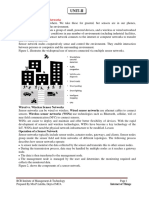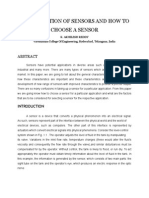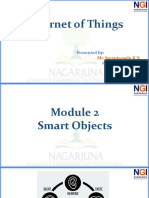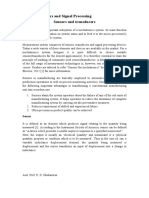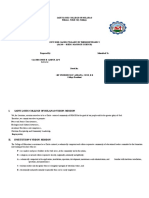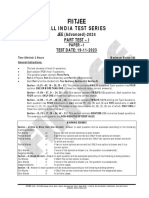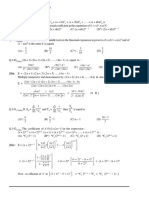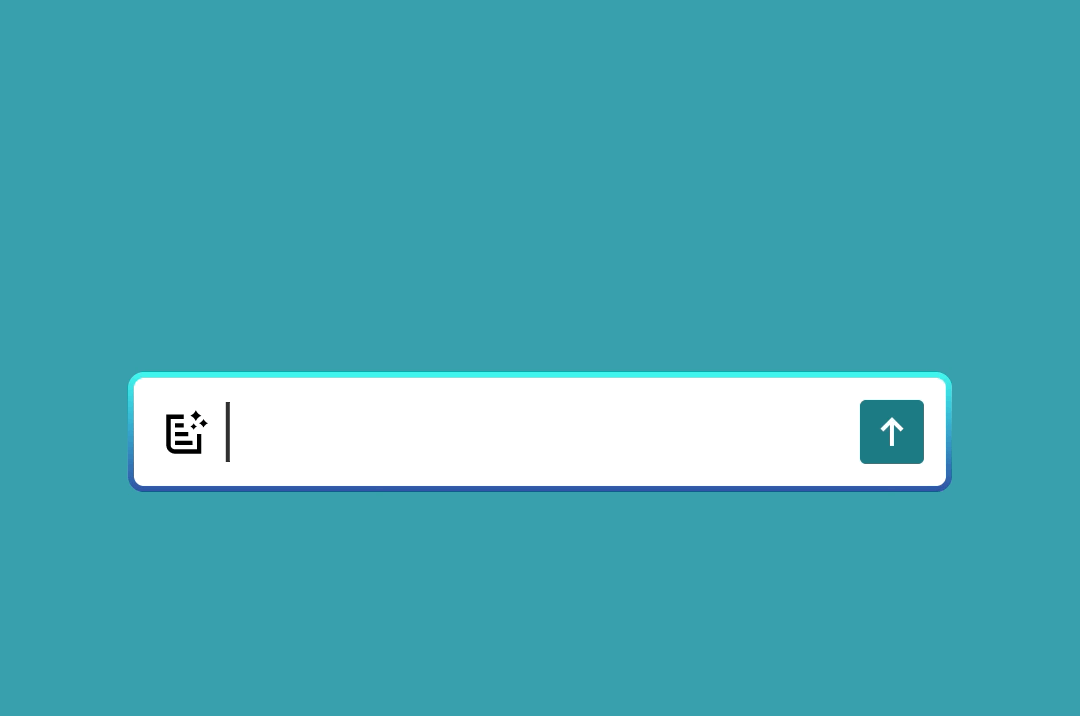Chapter:5 Sensors & Transducers
I.Introduction to Sensors and TransducersSensors:
A sensor is a device that detects and responds to some type of inputfrom the physical environment. The input can be light, heat, motion, moisture,pressure, or any number of other environmental phenomena. The output isgenerally a signal that is converted to a human-readable display at the sensor location or
transmitted electronically
over a network for reading or further processing.Sensors play a pivotal role in the Internet of things (
IoT
). They make it possible tocreate an ecosystem for collecting and processing data about a specificenvironment so it can be monitored, managed, and controlled more easily andefficiently. IoT sensors are used in homes, out in the field, in automobiles, onairplanes, in industrial settings, and in other environments. Sensors bridge thegap between the physical world and the logical world, acting as the eyes andears for a computing
infrastructure
that analyzes and acts upon the data collectedfrom the sensorsFigure:5.1 Sensors


Example:
The simplest example of a sensor is an LDR or a Light Dependent Resistor.It is a device, whose resistance varies according to intensity of light
it is subjected to.When the light falling on an LDR is more, its resistance becomes very less and whenthe light is less, well, the resistance of the LDR becomes very high.We can connect this LDR in a voltage divider (along with other resistors) and check thevoltage drop across the LDR. This voltage can be calibrated to the amount of lightfalling on the LDR. Hence, a Light Sensor.
Transducer
: A transducer is defined as a device that receives energy from one systemand transmits it to another, often in a different form. Broadly defined, the transducer is a device capable of being actuated by an energizinginput from one or more transmission media and in turn generating a related signal toone or more transmission systems. It provides a usable output in response to aspecified input measured, which may be a physical or mechanical quantity, property, or condition. The energy transmitted by these systems may be electrical, mechanical or acoustical. The input quantity for most instrumentation systems is nonelectrical. In order to useelectrical methods and techniques for measurement, the nonelectrical quantity isconverted into a proportional electrical signal by a device called a “transducer”. Actually, an electrical transducer consists of two parts that are very closely related toeach other. These two parts are the sensing or detecting element and the transductionelement. The sensing or detecting element is commonly known as the sensor.Figure:5.2
Transducer Block Diagram
Sensing Element:
The physical quantity or its rate of change is sensed and respondedto by this part of the transistor.
Transduction Element
: The output of the sensing element is passed on to thetransduction element. This element is responsible for converting the non-electricalsignal into its proportional electrical signal.
II.Comparison between sensors and Transducers
Sr. No
SensorsTransducers
1A sensor is a device whichconverts the physical parameter of a quantity into correspondingelectrical output. A transducer is a device that transformsenergy from one form to another, suchas speed into electrical signal.2A sensor does not have any other component except itself.The components of a transducer are −input device (sensor), processing device(signal conditioning), and output device.3All the sensors are nottransducers. A sensor is the part of all thetransducers.4A sensor is less complicated in itsconstruction and processing.Transducer is a relatively more complexdevice because it involves thetransformation of energy from one formto another.5A sensor detects the change inthe physical parameter of quantityto produce a correspondingelectrical signal.The transducer converts the energy intoa different form.6The sensor does not provide anyfeedback to the system. Thismeans, it only measures thechange in the physical quantityand cannot give input to thesystem on its own.Transducer generally provides feedbackto the system through the output deviceafter processing.
7Common examples of sensorsare temperature sensors, photosensors, proximity sensors, etc.Examples of transducers are: straingauge, microphones, loudspeakers,piezoelectric elements, etc.
III.
Applications of Sensors and Transducers
Application of Sensors
Top Applications of Sensors. Sensors find usage in various industrieslike Automotive, Manufacturing, Aviation, Marine, Medical, Telecom, Chemical, andComputer Hardware. Let's examine some of the applications of sensors in theseIndustries.
1)
Automotive:
Antilock Braking System (ABS) Sensors connected to the wheel,measure the speed of the wheel and braking pressure and keep sending them to ABS controlling When the driver applies the sudden brake, the ABS system, withbreaking pressure and speed data received from the sensors, releases thebraking pressure to avoid skidding/locking of wheels. It is one of the critical safetyaspects of vehicles.
2)
Manufacturing:
Predictive maintenance of the machinery, Assembly equipmentusing the data collected from sensors in the machines. Optimal utilization of Machines by continuously monitoring the performances and effectively rejiggingthe operations with the data collected from sensors. Fine-tuning the Qualitysystems and enhancing the quality standards using the data collected fromsensors. Design notifications and alerts in case of a deterioration of quality andprocess standards. Agility in reacting to market demands.
3)
Aviation:
Sensors deployed in the aviation industry measure the data during thenavigation of aircraft, monitoring various systems, and controlling instruments.These data are utilized for inefficient flight operations, improve aircraftperformance, and design improvements. Some of the instrumentation sensorsare tachometers, gauges to measure engine pressure and oil& fuel quantity, Altimeters, airspeed meters, etc. Sensors help measure the testing of the groundconditions, vibration, and environmental factors and provide useful inputs to thepilot to manage the general operation and emergency conditions.
4)
Medical & Healthcare






